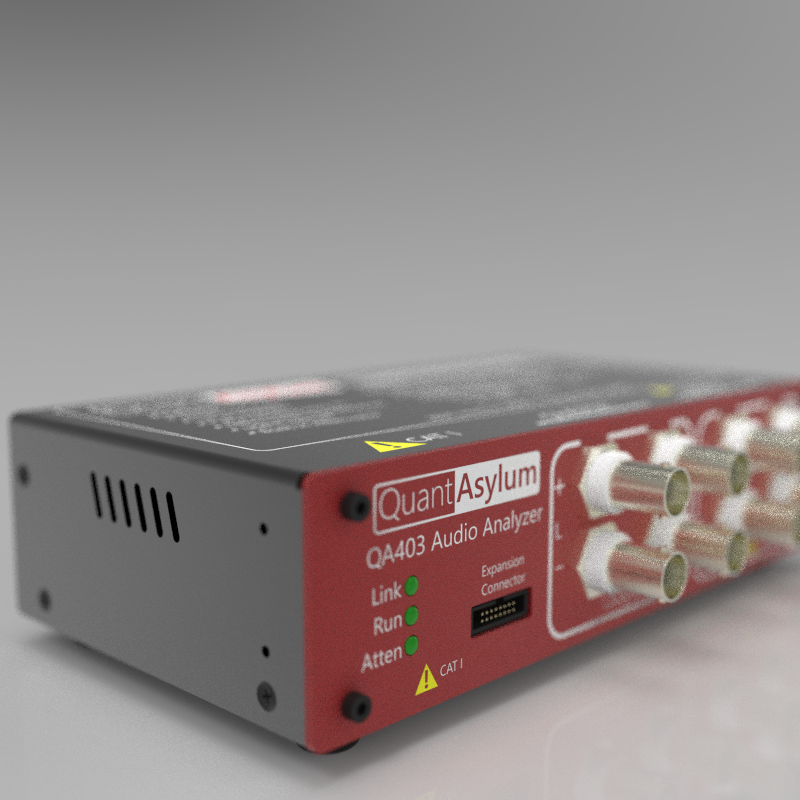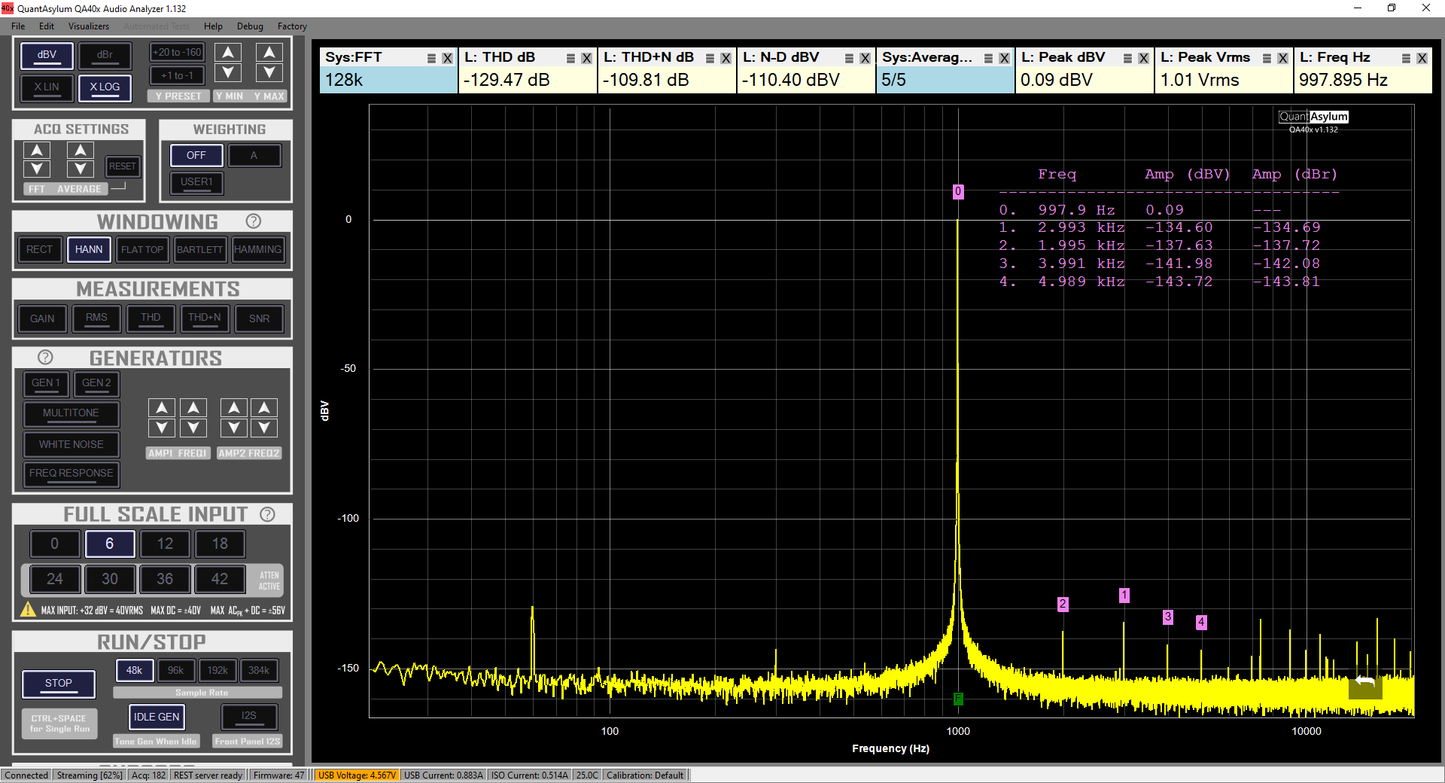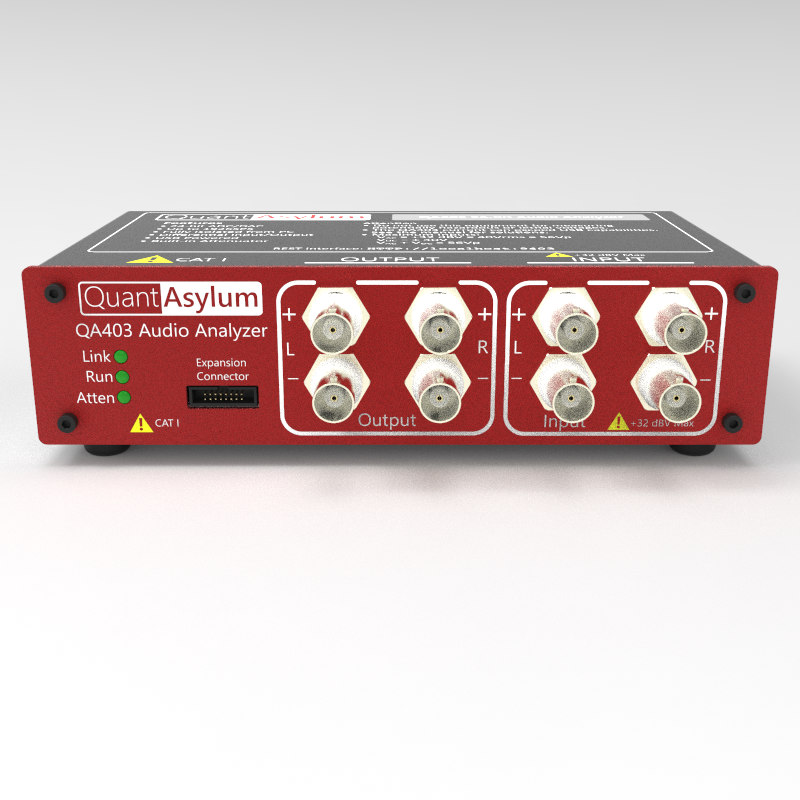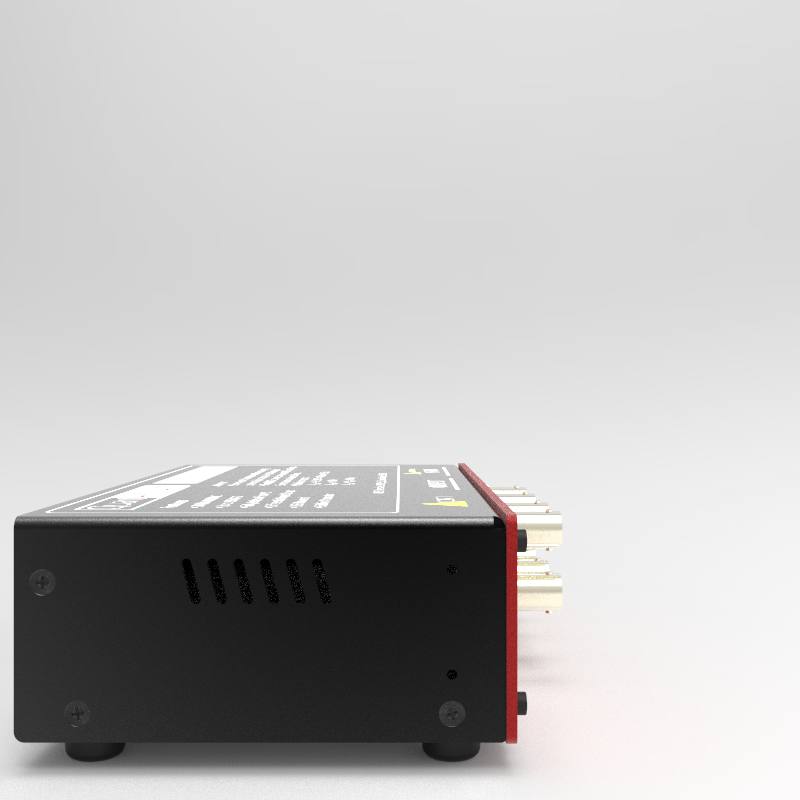QuantAsylum
QA403 Audio Analyzer
QA403 Audio Analyzer
Couldn't load pickup availability
14-Nov-2025: The QA403 is back in stock

|

|
Affordable and Powerful Audio Analysis
The QA403 is our 4th generation audio analyzer. Since 2012 we've been providing audio test and measurement to companies around the world. And with each iteration, the capability and programmability of the analyzers continues to grow.
The QA403 won't deliver the performance of a $30,000 audio analyzer. But in 99% of cases, it doesn't need to. Whether you are working from home for a few days or setting up a manufacturing line, the QA403 delivers the performance you need--with margin--to test most products being developed today. And it does so quickly using the included software or with software you write.
Some of our customers have purchased more than 50 of our analyzers for use in both R&D and manufacturing. It's a proven platform with capabilities that continue to evolve over time.

No License, Tiny Install
The software included is free to download and you can install it on as many machines as you wish (the software only works with our hardware). You don't need a license or a dongle. Install a copy on your work machine and another on your home machine. If you are used to test and measurement environments with onerous licensing or that are hundreds of megabytes just for the distributable, you are going to love the QA403 software. Including manual, it takes less than 5Mbytes. And you can even run it from a USB key. No drivers required.
The no-calibration design means you are making common audio measurements in minutes. Gain, THD(+N), noise, frequency response. It's all there. Automated measurements let you create sophisticated swept plots of THD versus frequency and/or level, or frequency response versus level in seconds.
The software runs natively on Window 10 and 11, but has also been run natively using Mono under Linux. Other versions of Windows may work, but are not tested. If you aren't sure about your platform, post a question on the FORUM.

The software automatically handles setting the various relays and gain stages inside the QA403. If you are used to sound cards and their fixed input ranges and ambiguous calibrations, you'll appreciate the no-cal design of the QA403. If you measure 0.0 dBV on the +6 dBV input range, tight calibration ensures you'll also measure 0.0 dBV on the +42 dBV input range. And with up to +18 dBV of output single-ended (and +24 dBV balanced), you'll have plenty of headroom to push modern low-gain, high-power amps to their limits.
Note: The software uses a proprietary link to the hardware. You don't need to install a driver, but be aware the hardware will not work with other software applications. The benefits of the proprietary link are numerous. But the biggest win is that we can guarantee a bit-exact communication link that is immune from hidden sample rate conversions and bit depth changes common with UAC devices.
The Hardware
The hardware is powered by USB. The current consumption is higher than 500 mA, and so you will likely want to run it from a powered USB hub if your laptop cannot support the higher current draw. The application reports both USB voltage and current, making it easy to know if you need to switch to a powered hub.

The hardware is compact at just 177mm wide x 44 tall x 97 deep (115 mm including BNC connectors). This is the same size as the QA402, and it means the QA403 easily slips in your backpack. The inputs and outputs are balanced. Front panel status LEDs convey the various operating modes, and an expansion connector can drive an I2S hardware inputs on your DUT, making it easy to test DUTs that have an I2S input in lieu of analog inputs.
The analyzer is isolated, letting you avoid many of the "ground loop" problems commonly associated with sound cards. And the differential input and 8 input ranges means most of your power amp measurements can be made directly without needing an external attenuator.
The Performance
The QA403 performance is a substantial leap beyond the QA402. The QA403 moves to new ADC and DACs by ESS Technology. These parts are highly programmable and very capable, and their performance is unmatched.
The graph below shows the THD versus input level when driven by a high quality external 1 kHz analog oscillator. More plots like this, as well as the product specifications, are available in the QA403 Product Brief below.
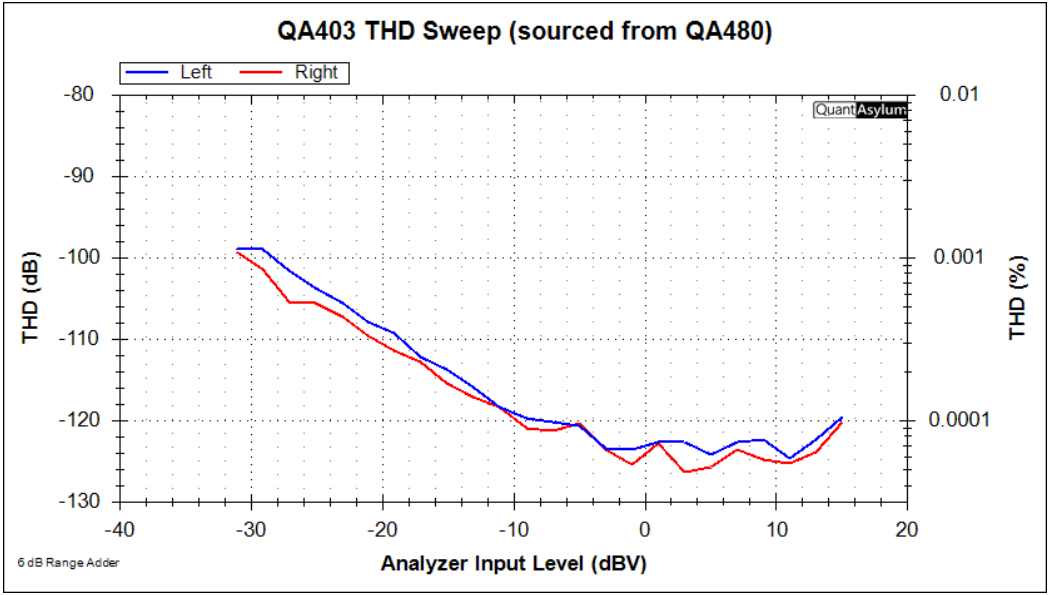
The Design
The design of the QA403 isn't based on common "hobbyist" grade I2S solutions or a multi-board solution sourced from various suppliers. Instead, it's an in-house design from the ground up, including the firmware. The single board approach maximizes reliability and performance and minimizes costs. Particular attention has been paid to power consumption while still delivering +/- 13.5V rails internally.

If you'd like the QA403 paired with some of our other offerings in a single rack-mount unit, just ask. We can laser-cut a custom face plate that let's you put 2 or 4 instruments side by side in a rack install. For example, the QA403 paired with a QA460 Transducers driver and a pair of QA471 mic pre's yields a powerful and economical speaker tester in a 2U rack.
The Programmability
If programming isn't your thing, it's easy to make swept tests from within the QA40x application. But if you can write code download a webpage in your favorite language, then you already know how to "talk" to the QA403. The programming is done using HTTP GETs and PUTs to "talk" to the analyzer. In Python, if you wanted to retrieve the left channel THD of an acquisition, you'd write:
ThdDbLeft = float(requests.get('http://localhost:9402/ThdDb/1000/20000').json()['Left'])
You can run an acquisition and then pull across both raw time domain and frequency domain data, if needed, for your own signal processing. And the values you pull across are absolute. That is, if you are measuring a 0 dBV sine wave, your time domain data will show absolute values with +/- 1.41V peaks just as you'd expect.
And since most languages can support HTTP GET and PUT, this means interfacing with the QA403 even in languages such as Matlab is straightforward. And yes, it's also straightforward to use theQA403 from newer interactive environments such as a Jupyter Notebook.
Easy Purchase (and Easy Returns, if Needed)
We sell worldwide from this website. Delivery overseas is generally via DHL, but you can choose your preferred carrier at checkout. Non-US customers will be required to pay any VAT upon receipt of the product. Generally, your shipper will contact you for VAT payment just before delivery.
The analyzer comes with a 15-day "no questions asked" return policy, and a 6 month warranty. If you need more time to evaluate the suitability to task, just ask.
More Reading on the QA403 and QA402
In the links below, the QA402 and QA403 are nearly 100% interchangeable. The biggest difference is that the QA403 has substantially better THD(+N) and noise performance than the QA402. The front panel expansion connector is also slightly difference in terms of pinout. Both the QA403 and QA402 use the same software.
Specs and performance on the QA403 here: QA403 Product Brief and Specs PDF
Users Manual from SW release 1.135 (later versions will have a more updated manual)
Wiki Getting Started
Wiki QA402/QA403 API
Application Notes: What do you want to measure?
Much of the content below was created with the QA401, but it's still relevant to the QA402 and QA403
Power Amps (5W to 1000W):
- Measuring Amplifier Noise with the QA401 and QA451
- The Basics: Power Amps
- Measuring a 300W Class D Amp
- Fast Tube Amp Characterization
- MERUS MA12070 Class D
- Evaluating Class D Amps with the QA401
- Swept Measurements
- Automated Amp Testing
- QA40x and IMD Measurements
Speakers:
Microphones:
DACs:
- Rapid DAC Evaluation
- Measuring DAC performance using Notch Filters
- Measuring DAC performance using Notch Filters #2
LDO and Component Noise
Outboard Processing Gear
- Automating EQ TEsting using Masks
- Characterizing a Tone Knob using Expo Sweeps
- Quantifying Fuzz
- RIAA and User Weighting
Design Validation
Manufacturing Testing
- Automating EQ Tests
- QA401H, REST and Python
- Low-cost Test Setups
- QA401 Headless and Linux
- Tractor: First Look
- QA401H, Ubuntu and VirtualBox
Share
